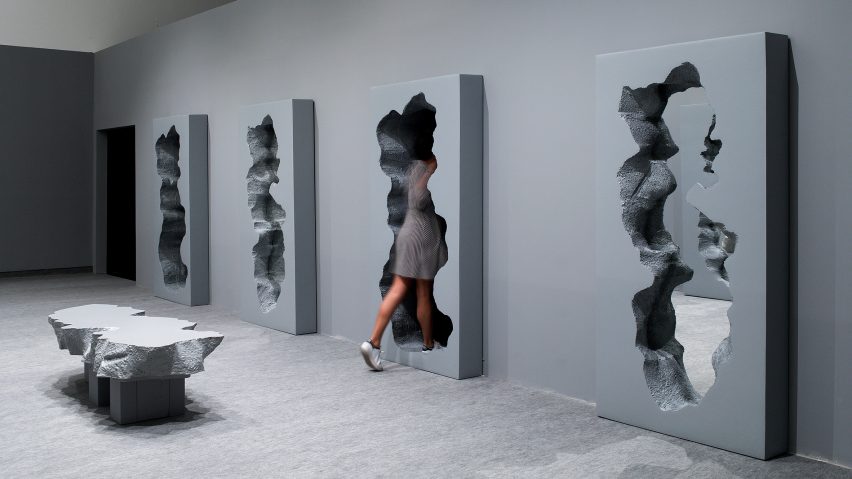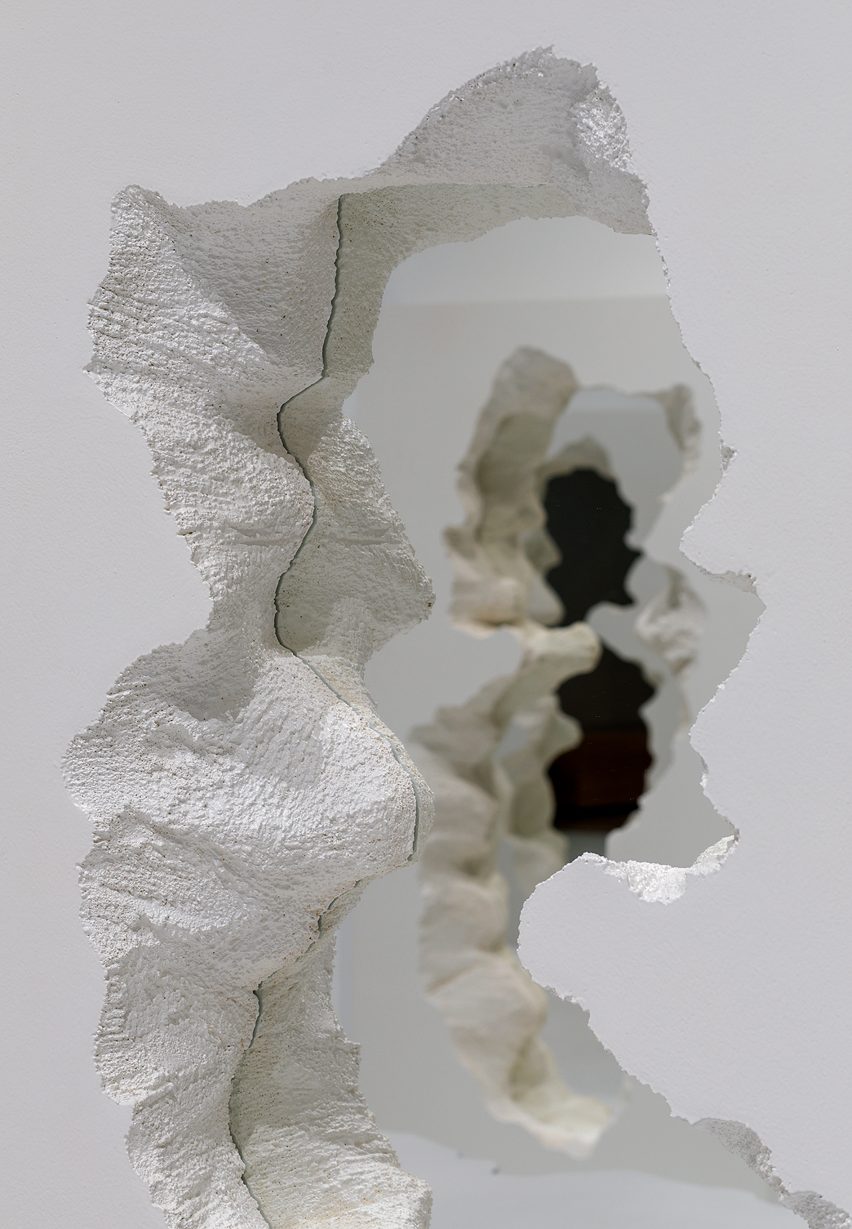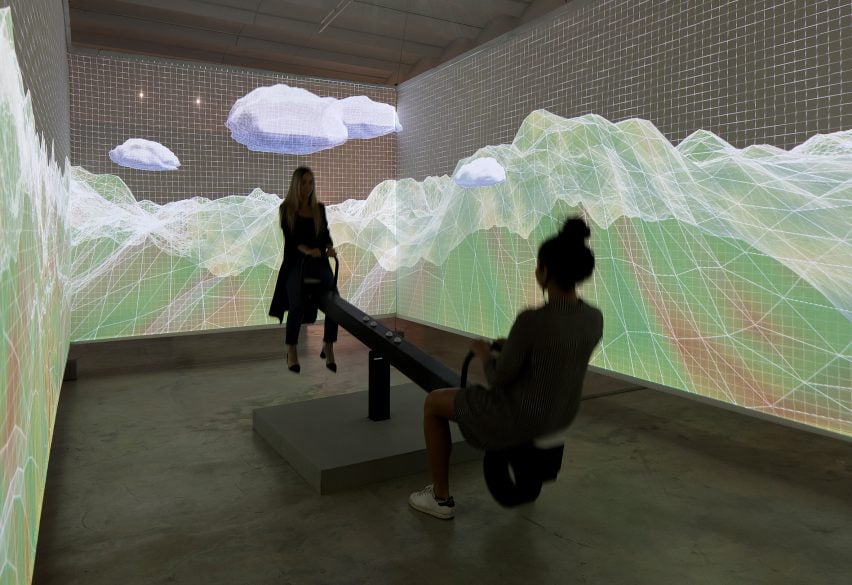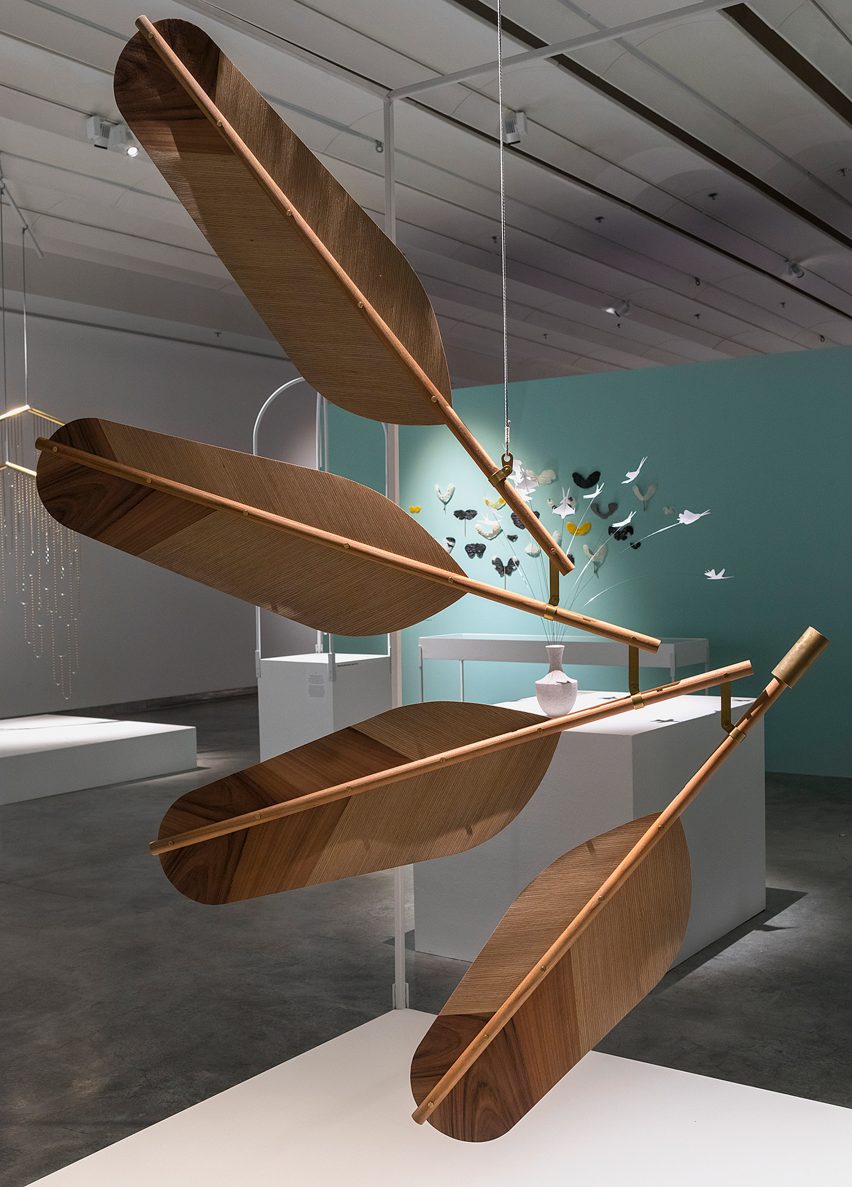
The Conversation Show explores how design collectives like Snarkitecture and Mischer'Traxler work together
Design Museum Holon in Israel presents five installations exploring what makes a successful design partnership, including a seesaw designed by BCXSY and a hall of broken mirrors by Snarkitecture.
The Conversation Show is an exhibition featuring the work of four design duos and one trio. Along with BCXSY and Snarkitecture, it also features Vienna studio Mischer'Traxler, Venetian duo Zaven and Israeli office Reddish.
Each studio has created an installation that visualises the way its designers work with each other, along with a video offering a deeper insight into their relationships.

New York-based Snarkitecture has created a series of three spaces – one white, one grey and one black – to represent designers Daniel Arsham, Alex Mustonen and Benjamin Porto.
The rooms are connected by rocky openings, created in collaboration with furniture brand Gufram. Some contain mirrors, while others are doorways between the galleries. Visitors are encouraged to walk through, to give them the feeling of moving between worlds.
The installation represents the "idea of a dialogue" that underpins Snarkitecture
Called The Hall of Broken Mirrors, the installation is intended to represent the "idea of a dialogue" that the studio was founded on.
"The goal, if anything, is to introduce things outside of the everyday," said Porto in the accompanying video. "In order to do that we need to engage different ways of thinking and different people's ideas. In that way it's more inclusive."

Amsterdam-based designers Boaz Cohen and Sayaka Yamamoto of BCXSY have created Reciprocal Syntax, a seesaw installation.
When visitors use the seesaw, colourful shapes and images are projected onto the surrounding walls.
BCXSY wanted to highlight "the importance of balance" in their work
The idea was to highlight "the importance of balance and common ground as the starting point of every creative process".
"The minute you start sharing and sharing the moments, it becomes for us like something much more special and much more unique," said Cohen in the film.
"It's a conversation," added Yamamoto.
Mischer'Traxler created a moving pendulum to represent their creative process
The contribution by Katharina Mischer and Thomas Traxler, of Mischer'Traxler, follows the typically mechanical style of the couple's work. It comprises a pendulum with a glowing sphere that swings towards people as they approach.
The couple wanted to visualise the sparks created through creative dialogue. "I think it's really like a ping pong between us," said Mischer.

Jaffa-based Reddish presents an installation called Balancing Act. Designers Naama Steinbock and Idan Friedman have created a series of objects where a delicate balance is essential to keeping elements in place.
Birds and their wings and feathers recur throughout these works.
The designers said a balance of industry and craft underpins their work
"If we're talking about balance, we have to think about the different ideas inside each object that balance between an industrial way of thinking and a craft way of thinking, something which is flexible and something which is con-structural," said Friedman.
"So if you want to be poetic you have to find things that could have more than one meaning."
Zaven explore Venetian glassmaking in their installation
The final installation, by Zaven's Enrica Cavarzan and Marco Zavagno, explores the studio's relationship with Venetian glassmaking. The pair have created a set of glass lights, using slabs of cast-glass created using a new layering technique.
"We decided to join these slabs to give the idea of two things coming together to create something unique," said Zavagno.
The Conversation Show opened at Design Museum Holon on 28 May and continues until 26 October. It was curated by Maria Cristina Didero, with exhibition design by Rona Zinger.
"The Conversation Show represents a peculiar approach to design, focusing on the centrality of people and the way they interact with each other," explained Didero.
"It aims to analyse and portray the shared and peculiar methodologies of working together on a new task, confirming design as a drive of communication exchange. But here we gave designers also another task: to envision a way to show and pass to the audience their personal way of interaction while creating."